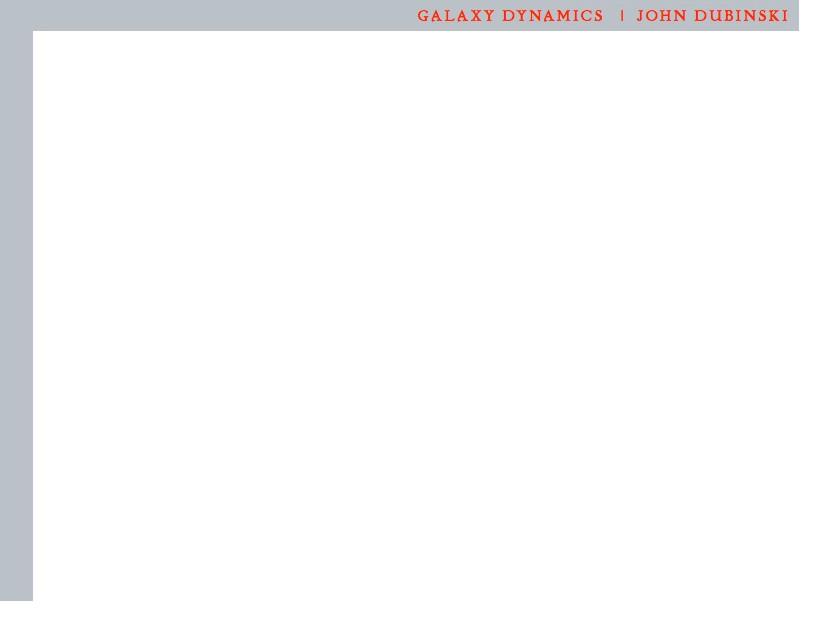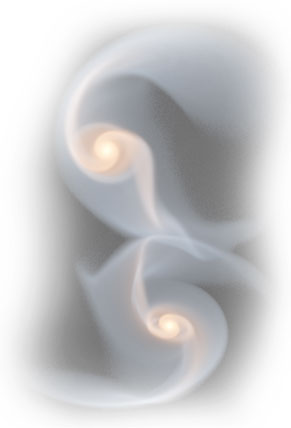




"There is perhaps nothing in Nature older than MOTION about which volumes neither few nor small have been written by philosophers." --Galileo Galilei
The everyday world is like a series of Galilean experiments on motion. Arms and legs swinging like pendulums, trees swaying in the wind, bicycles racing down a hill with rapidly spinning wheels, a baseball following the graceful arc of a parabola after a hit into leftfield, waves rolling in and breaking on the beach: these are all ordinary events in a world governed by motion. We usually take all of these phenomena for granted since weve been engineered through evolution to understand and react to these things intuitively.
The mathematical understanding of the physics of motion was laid down by Newton in his famous three laws and law of gravity more than 300 years ago. Newtons great leap in understanding was that these laws not only govern earthly events but are universal they apply everywhere and for all time. Physics developed further after Newton, with new theories for electricity, magnetism and light (Maxwells electromagnetism), the structure of the atom (quantum mechanics) and deeper understanding of motion and gravity (Einsteins special and general relativity). But Newtons idea of universality remains and this set of physical laws govern the dynamics of everything in the macroscopic universe on all scales from our earthly confines but also including the behaviour of Saturns rings, the intricacies of planetary orbits, the spiral patterns in galaxies, the collision and merger of galaxies and the formation of galaxies in an expanding universe.
The theme of Starfest this year is A Universe in Motion so I will describe how astronomers have come to understand the dynamic universe on many scales and in particular the realm of the galaxies mainly through Newtons three centuries-old laws of motion and gravity. Although we can infer that the universe is a dynamic place through observations of the spectra of distant galaxies, a depressing realization is that timescales associated with the motion of galaxies are incredibly long. When we look at a picture of a spiral galaxy, our intuitive understanding of motion tells us that this thing must be spinning since we have all seen spiral patterns in our stirred cups of morning coffee. But once astronomers determined the distance to galaxies they realized that a typical galaxy takes hundreds of millions of years to go around just once. Astronomers have been looking at galaxies for 2 centuries and they havent changed noticeably in appearance nor will they look much different even after a million years. How can we every hope to understand whats going on?
One enlightening strategy is through the power of mathematical modeling and computer simulation. The laws of physics are represented by mathematical equations so one can write computer software to solve these equations and so calculate the orbits of large collections of particles modeled to represent the stars in galaxies. With the wonders of 21st century parallel supercomputing, models of galaxies of exceptional realism can be constructed and simulated over a period of a few weeks to see what happens over billions of years. You can also use modern methods of computer graphics to create animations to help visualize the process. The same techniques are used in Hollywood for animated features and special effects but a crucial difference here is that the displayed behaviour is as real as the underlying laws of physics.
I will present some of my own work in computer simulation and animation that depicts beauty and complexity in the dynamics of galaxies. Some of this work is part of the GRAVITAS project a collaboration with composer John Kameel Farah where the science of gravity is interpreted artistically through original music inspired by animations of gravitational physics. Many cosmic stories will be told including the origin of the large-scale structure of the universe, the evolution of the spiral patterns of galaxies and the chaotic and frenzied dynamics of galaxy clusters. Perhaps, the most interesting story I have to tell is the likely future collision and merger of our own Milky Way with Andromeda an event that may occur as soon as 3 billion years from now long before the Sun dies and perhaps at a time when astronomers are still looking up and wondering what its all about.